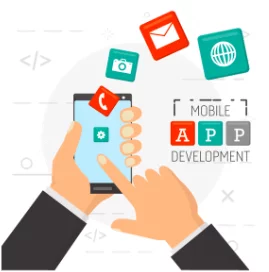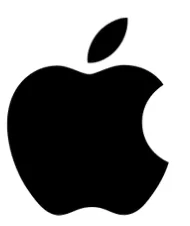Are you thinking of creating a mobile application for your startup, but don’t know where to start?
Building a mobile app requires careful planning and execution. In this article, we will outline eight essential steps for making it successful for your business.
We will begin with defining your app idea and goals and conducting market research to monitor and improve your app. Whether you choose the Android or Apple platform, our guide will provide you with a comprehensive roadmap for building a mobile app that helps your business achieve its goals.
So, let’s get started!

Define Your App Idea and Goals
The first step in the app development process is to define your app idea and set your goals. A mobile app idea could be unique but not necessary. If they are some competitors, that’s good news! That means that there is an audience for your app.
Before starting the app development, research the mobile app market, and identify gaps or opportunities. Once you have defined your app idea, set clear goals and objectives for your app to measure its success: number of users, monthly recurrent revenues (MRR), keep it as a side project / full job perspective, sell it after few months/years, etc.
Here is an article with mobile applications ideas for startup that are trendy in 2023: 11 Innovative Mobile App Ideas for Startups In 2023 | Zenesys
Conduct Market Research
After defining your app idea and goals, conduct market research to validate your app idea. Identify the type of app that will be relevant to your app users and identify the unique features that will make your app stand out.
Additionally, research the app monetization strategies that can help you generate revenue from your app.
Here is a short video that explains how to do it:
Choose the Right App Development Software
Selecting the right app development software is essential in making an app that helps your startup to reach its goals. You can hire an app development team or use app builders to make your app. Hybrid development tools allow you to create an app once and deploy it across different platforms, such as Android and Apple.
Android platform 
Android is a mobile operating system developed by Google that offers a customizable and open-source platform for mobile application development. The platform includes a set of tools and APIs that enable developers to create innovative and high-quality mobile apps using Java and Kotlin programming languages.
Android offers a range of features and functionalities, including a customizable user interface, seamless connectivity with other Google services, and a growing user base.
Android apps can be published on the Google Play Store or other third-party app stores, providing developers with flexibility in terms of app distribution. Overall, Android is an attractive platform for mobile app development that provides developers with the tools and resources to create high-quality and unique applications for mobile that meet the diverse needs of Android users.
Apple platform

Apple’s mobile operating system, iOS, provides a user-friendly and high-quality platform for mobile app development. iOS apps are primarily developed using Swift and Objective-C programming languages and are built on top of the iOS software development kit (SDK).
Apple’s platform offers a range of features and functionalities, strict app review guidelines, and a lucrative revenue potential for app developers.
The App Store is the official app store for iOS, offering a vast selection of apps across various categories. Overall, iOS is an attractive platform for mobile app development that provides developers with the tools and resources to create high-quality and innovative mobile apps that cater to the needs of iOS users.
Develop Your App
Once you have selected the right platform, it is time to develop your app!
First, design the app and its features according to your app idea and goals. Focus on improving your app in the development phase by getting feedback on your app’s usability, design, and features. We recommend you to work with Agile methodology, that is the best way to develop an app step by step, putting users’ needs in the center of your choices.
Make sure your app is technically sound and functions well on every mobile device.
You may not have the required skills to develop your project. Don’t worry web agencies can do this for you. Our agency, iterates for example, can bring your idea to life. If you need advice, take a look at our article: How to choose the right web agency for your SMB?
You can also contact us for more information:
Test Your App
This step is essential before submitting the app to the app store. Test your app thoroughly to ensure its usability and quality.
Validate your app by conducting tests that simulate real-world scenarios.
Testing helps you to identify bugs and issues and ensure that your app meets the guidelines of the app store.
Publish and Promote Your App
After successfully testing your app, publish it to the relevant app store, such as the Apple App Store or Google Play.
Make sure your app is available for download and visible to your target audience. Take time to create beautiful illustrations, short and long descriptions, and to choose the good categories for your app. It’s an important factor to be successful in the stores. Check your competitors and the most downloaded apps.
Promote your app through mobile marketing and advertise your app through various channels, such as social media and email.
Monetize Your App
Mobile app monetization is critical to the success of your app startup. There are various monetization strategies, such as in-app purchases, subscriptions, and advertising, that can help you generate revenue from your app. Choose the right monetization strategy that suits your app and its users.
7 monetization strategies
- In-App Purchases: In-app purchases allow users to buy virtual goods, premium features, or services within the app. This strategy works well for gaming and entertainment apps that offer additional features or content for a fee.
- Subscriptions: Subscriptions are a popular monetization strategy for apps that offer ongoing services or content. Users pay a regular fee, such as monthly or annually, to access premium content or features.
- Advertising: Advertising is a common monetization strategy for free apps. You can display ads within your app, such as banner ads, interstitial ads, or video ads. You can also use third-party ad networks, such as AdMob or Facebook Audience Network, to serve ads and generate revenue.
- Sponsorships: Sponsorships involve partnering with other businesses or brands to promote their products or services within your app. This strategy works well for apps that have a large user base and a specific target audience.
- Freemium Model: The freemium model offers users a basic version of your app for free, with limited features or content. You can then offer a premium version of your app with more features or content for a fee. This strategy works well for productivity or utility apps that offer additional features or services for a fee.
- Pay-Per-Download: Pay-per-download allows users to download your app for a fee. This strategy works well for apps that offer unique or valuable content that users are willing to pay for.
- Referral Marketing: Referral marketing involves offering users rewards or incentives for referring new users to your app. This strategy can help you to grow your user base and increase engagement.
Monitor and Improve Your App
The final step in the mobile app development process is to monitor and improve your app continually.
Use analytics to track the usage of your app and identify areas that need improvement.
Regularly update your app and add new features to improve your app’s performance and user engagement.
Conclusion
Developing a successful mobile app requires careful planning, execution, and ongoing monitoring and improvement.
Defining your app idea and goals, conducting market research, choosing the right app development software, and developing and testing your app are crucial steps to building a high-quality app. Once your app is ready, publishing it on the relevant app store, promoting it and monetizing it using the right strategies can help you generate revenue and reach your target audience.
Lastly, monitoring and improving your app’s performance and user engagement will ensure its long-term success. Whether you select the Android or Apple platform, following these eight essential steps will help you create a unique and innovative mobile app that meets the needs of your startup and its customers.
